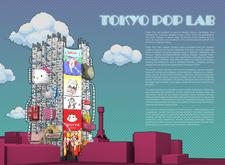5 key facts about this project
At its core, the project serves a multifaceted purpose, operating as a community hub that fosters interaction and engagement among its users. The architecture is carefully crafted to accommodate various activities, facilitating social gatherings, educational opportunities, and recreational spaces. This design aims to create an inclusive environment that seamlessly blends individual privacy with communal experience, reinforcing the project's role as a social focal point.
Important architectural elements of the project include an innovative façade that employs a combination of materials, such as reinforced concrete, glass, and sustainably sourced wood. The use of glass not only enhances the building’s transparency, inviting natural light into its interior, but also connects the indoor spaces with the outdoor environment, allowing for visual continuity and interaction with nature. The concrete provides structural robustness while offering aesthetic versatility, capable of complementing the organic qualities of the surrounding landscape. The wood used in the design introduces warmth and a tactile quality, forging a harmonious relationship between the built environment and its natural surroundings.
The building's layout is characterized by open floor plans, which facilitate flexible use and adaptability. This design choice reflects a growing trend in contemporary architecture that prioritizes user experience and adaptability to various functions over rigid spatial divisions. The project incorporates strategically placed communal areas that promote social interaction, equipped with seating arrangements that encourage gathering and discourse among visitors.
Adding to the uniqueness of the architecture are the roof structures, designed not only for aesthetic purposes but also for practical functionality. These roofs serve as both shields against the elements and as places for green roofs or terraces, further promoting sustainability and enhancing the building’s energy efficiency. Rainwater harvesting systems are incorporated, emphasizing the project's commitment to environmental stewardship.
The architectural design emphasizes sustainability, utilizing materials with low environmental impact and energy-efficient systems. An integrated approach to passive design strategies allows for natural ventilation and thermal comfort, reducing reliance on artificial heating and cooling systems. This commitment to sustainability aligns with the growing demand for eco-conscious architecture, reflecting a wider societal shift toward environmentally responsible building practices.
The project stands out through its ability to balance modern architectural techniques with the contextual nuances of its location. The blend of community-focused spaces, innovative material usage, and sustainable practices showcases how thoughtful design can meet contemporary architectural challenges. The result is a series of environments that are not only functional but also foster a sense of belonging and community.
For further insights into this architectural endeavor, including architectural plans, architectural sections, and a deeper exploration of the architectural ideas behind the design, readers are encouraged to explore the project presentation. Engaging with these details will provide a fuller understanding of the thoughtful considerations that have shaped this unique architectural expression.























